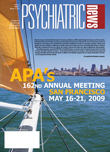San Francisco's recent history is probably best captured by three seismic events—the 1848 gold rush, the 1906 earthquake and fire, and the 1967 Summer of Love. All three events have to do with the amassing of treasure, although not necessarily of the same kind.
Let's start with the gold. In 1848 gold nuggets were discovered in the Sierra foothills northeast of San Francisco where a Swiss immigrant named Johann Augustus Sutter—known as John Sutter in English—was building a saw mill. The discovery prompted thousands of speculators to surge into San Francisco. Its population increased from some 1,000 in 1848 to 25,000 by the end of 1849. Moreover, the crews of sailing vessels dropping anchor in San Francisco harbor during this period often deserted their vessels to seek gold.
Most gold seekers, however, found only enough gold to pay for their daily expenses. Even Sutter, who had wanted to create a utopian agricultural settlement, was quoted in 1857 as saying, “What a great misfortune was this sudden gold discovery for me!.... From my mill buildings I reaped no benefit whatever, the mill stones even have been stolen and sold.”
By the start of the 20th century, San Francisco had struck it rich again. Its U.S. mint, located on the corner of Fifth and Mission streets, contained a third of the country's gold supplies. It was the largest city on the West Coast, the financial center of the West, and famous for its ostentatious mansions, stately hotels, and flamboyant style.
Misfortune struck on April 18, 1906, when a powerful earthquake struck San Francisco. As buildings collapsed, ruptured gas lines ignited fires that rapidly spread throughout the city. Several thousand residents died. More than half of the city's population of some 400,000 were left homeless. This earthquake was the worst incident that the American insurance industry experienced up to September 11, 2001—almost a century later.
But San Francisco rose from the ashes and once again became a financial powerhouse. In the wake of the 1929 stock market crash, not a single San Francisco-based bank failed. Even at the height of the Great Depression, San Francisco undertook two major civil engineering projects—the building of the Oakland Bay Bridge and the Golden Gate Bridge.
In the summer of 1967, San Francisco acquired wealth of a less tangible nature than gold or currency. Thousands of young people—so-called hippies or flower children—flocked into the city's Haight-Ashbury neighborhood. The migration was named the Summer of Love.
“It was sex, drugs, and rock and roll, and those were all fun,” Paul Krassner, an author and social satirist, was quoted as saying in the May 23, 2007, San Francisco Chronicle. “But at the core of the counterculture was a spiritual revolution, in a sense of leaving the Western religions of control and exploring the Eastern disciplines of liberation.”
And as Angela Alioto, a civil-rights lawyer, was quoted as saying in the same issue of the Chronicle, “The Summer of Love really stressed the principles of St. Francis of Assisi, the guy who loved the environment, loved animals, loved the sick and poor, and was against war.... The Summer of Love was flat-out beautiful!”
Then a San Francisco influenced by the 1967 love fest, as well as by the 1960s black civil-rights and feminist movements, helped mobilize, beginning in 1970, the national gay rights movement. In 1977 Harvey Milk was elected to the Board of Supervisors in San Francisco. He was the first openly gay man to be elected to political office in the United States. In 1978 San Franciscans, as well as other Californians, defeated Proposition 6, which would have banned homosexuals from teaching in public schools. Today San Francisco has the highest percentage of gay and lesbian residents of any American city—estimated to be about 15 percent.
Reverberations from San Francisco's 1848 gold rush and from its 1906 earthquake and fire have long vanished. But its 1967 Summer of Love still resonates to some degree. The San Francisco of 2009 is largely a bastion of liberation, tolerance, and affability for all people. Come see for yourself.
More information about San Francisco's history is posted at<www.zpub.com/sf/history/sfh2.html>.▪
